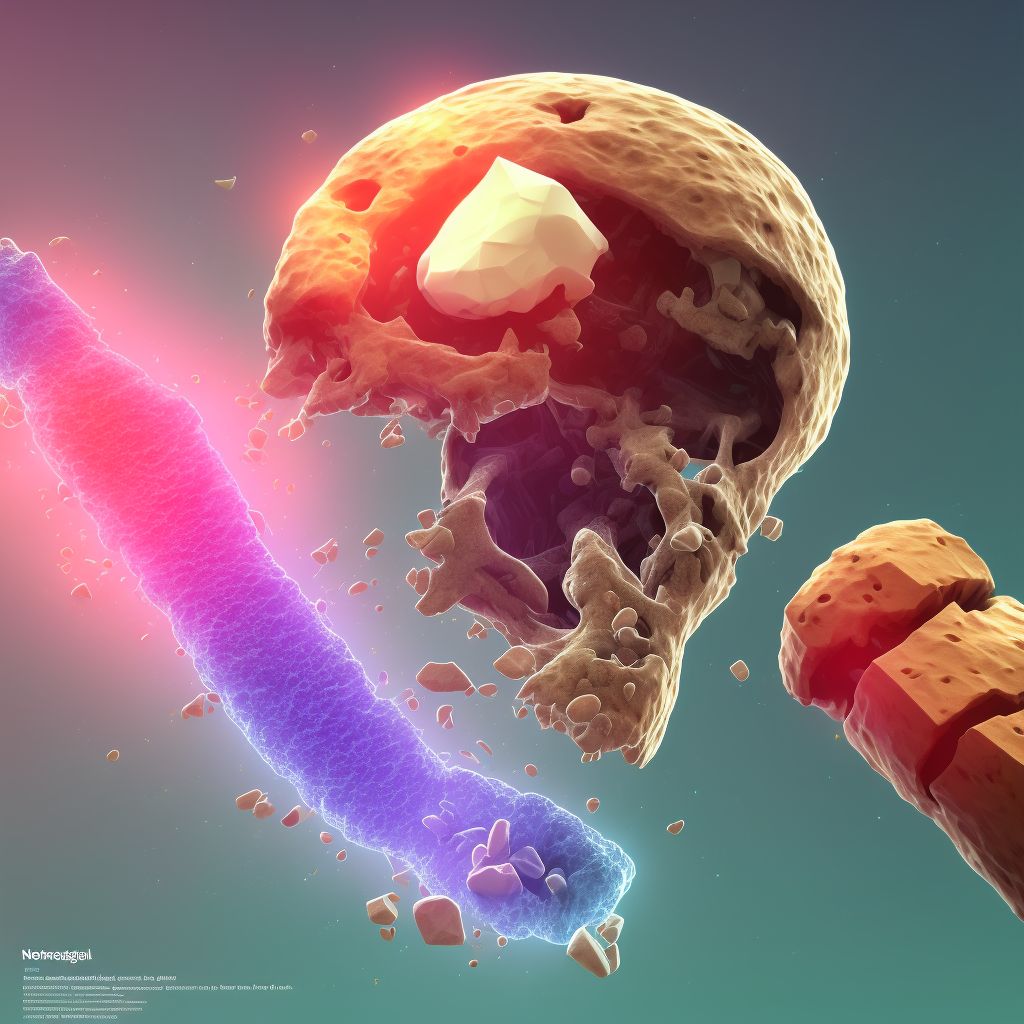
Nondisplaced segmental fracture of shaft of unspecified tibia, subsequent encounter for closed fracture with delayed healing Save
ICD-10 code: S82.266G
Disease category: S82.266: Nondisplaced segmental fracture of shaft of unspecified tibia
Nondisplaced Segmental Fracture of Shaft of Unspecified Tibia: Understanding Closed Fractures with Delayed Healing
A nondisplaced segmental fracture of the shaft of the unspecified tibia refers to a specific type of closed fracture that occurs in the leg bone (tibia) where the bone breaks into multiple segments but remains in alignment without any significant displacement. This condition often requires subsequent medical encounters for monitoring and management of delayed healing.
While treatment options are not discussed in this article, it is essential to understand the nature of this fracture and its implications. Delayed healing is a common concern associated with this type of fracture, which may require additional medical attention.
When faced with a nondisplaced segmental fracture of the shaft of the unspecified tibia, patients may experience pain, swelling, and difficulty bearing weight on the affected leg. It is crucial to seek medical attention promptly to assess the severity of the fracture and determine the appropriate course of action.
An X-ray or other imaging techniques are commonly used to diagnose this type of fracture accurately. Once diagnosed, the subsequent encounter for closed fracture with delayed healing involves ongoing monitoring and management of the healing process.
- Regular follow-up appointments: Patients with this type of fracture may require regular visits to their healthcare provider to monitor the progress of healing. These visits allow for assessment of any changes in the fracture site and evaluation of the bones' alignment.
- Physical therapy: In some cases, patients may be referred to a physical therapist to aid in the rehabilitation process. Physical therapy can help restore range of motion, improve muscle strength, and promote stability in the affected leg.
- Monitoring of symptoms: Patients should be vigilant in observing any changes in their symptoms, such as increased pain, swelling, or difficulty moving the leg. Reporting these changes to the healthcare provider can help ensure timely intervention if required.
It's important to note that the treatment for a nondisplaced segmental fracture of the shaft of the unspecified tibia varies depending on the patient's individual circumstances. Consulting with a healthcare professional is crucial to determine the most appropriate course of action.
In conclusion, a nondisplaced segmental fracture of the shaft of the unspecified tibia can lead to delayed healing, requiring subsequent medical encounters. Regular follow-up appointments, physical therapy, and symptom monitoring are essential components of managing this condition. Seeking professional medical advice is crucial for proper diagnosis and treatment recommendations.
Treatment of Nondisplaced segmental fracture of shaft of unspecified tibia, subsequent encounter for closed fracture with delayed healing:
Treatment Options for Nondisplaced Segmental Fracture of Shaft of Unspecified Tibia, Subsequent Encounter for Closed Fracture with Delayed Healing
Dealing with a nondisplaced segmental fracture of the shaft of the tibia can be challenging, especially when encountering delayed healing. However, there are various treatment options available to promote healing and restore functionalit...
To see full information about treatment please Sign up or Log in